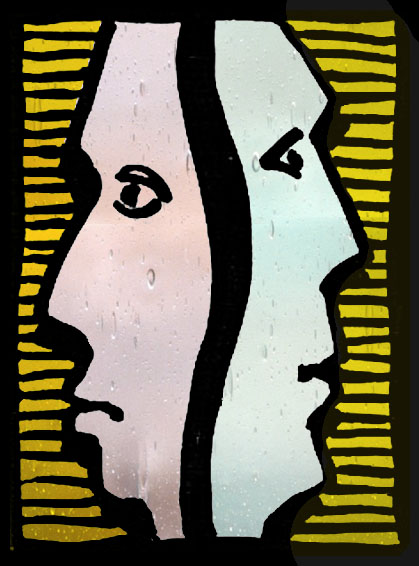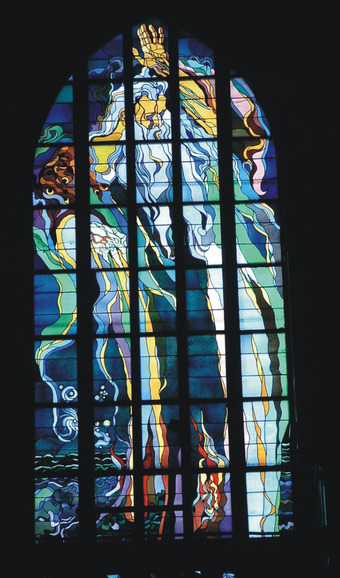January 27, 2010
Stanisław Wyspiański
Not much posting recently, partly because I've been busy and partly because all the posts I've tried to do recently just get bigger and bigger and I can't figure out how to tie them up into a coherent whole. This is one example and I've decided to just let it go, rambling and imperfect as it is. Maybe I'll hone it later, but for now, here it is -
When I first saw this image on Flickr a few months ago, I thought it was the work of some obscure artist from the 1970's or even more recent. I guess I was fooled by the fact that the faces are created with the leadlines, not with paint, something that is quite rare before the 1970's. It turns out this piece is from 1904 and is by Stanisław Wyspiański (1869 – 1907). The panel is called 'Apollo: the Copernican solar system' and it's located in the Medical Society House at 4 Radziwillowska street, Cracow, Poland.
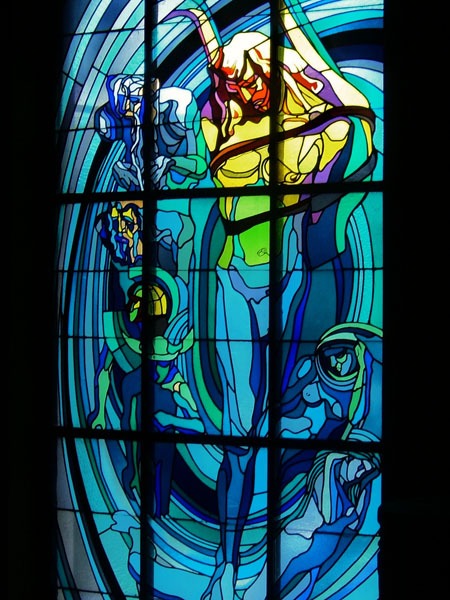
It also turns out that Wyspiański is an especially unique and interesting artist.
More below the fold....
Medical Society House, Kracow
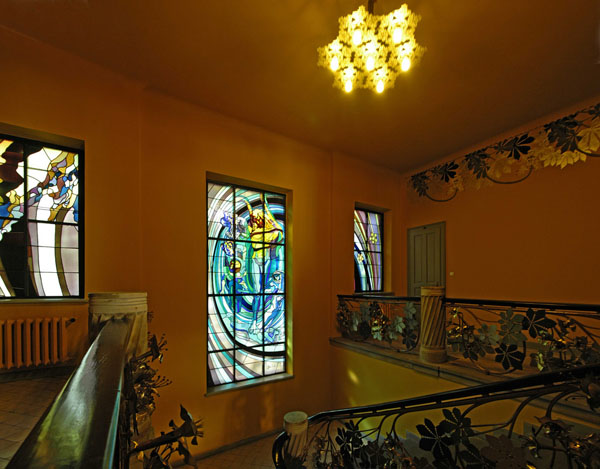
Interesting segment about the making of the Apollo panel.
Drawing for the Apollo Panel.
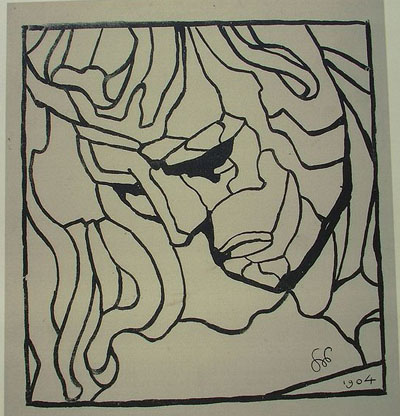
Playwright, Poet, Painter, and... Stained Glass Designer
Stanisław Wyspiański is best known in his native Cracow, Poland, as a playwright, and most well known for the 1901 play The Wedding. There is a movie version of the The Wedding on YouTube, though it's in Polish with no English subtitles.
These images are all Wikimedia Common files.
This looks to be a design for stained glass.
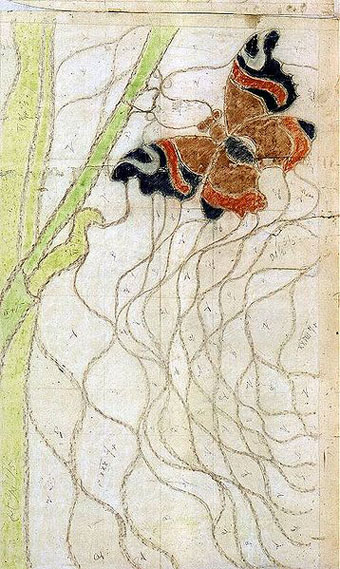
He did a number of self portraits.
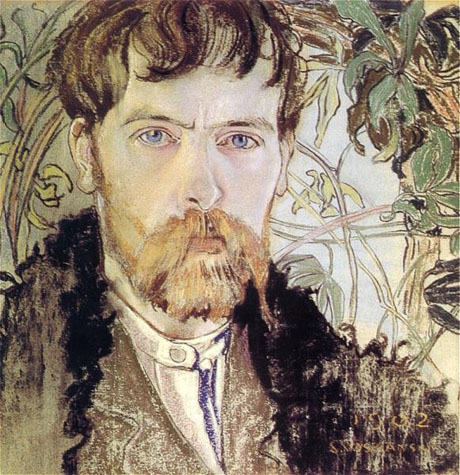
And family scenes
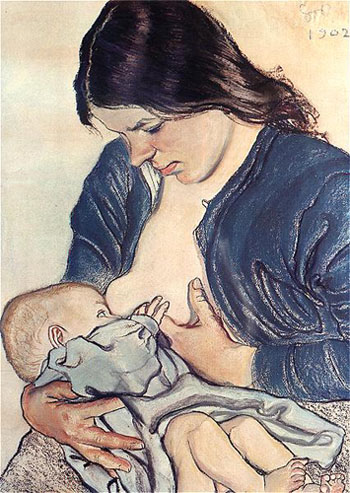
Illustration for a series on Heroic and mythical figures - this one of Agammenon and Menelaus, from The Iliad.

Curious fact - Wyspia%C5%84ski (b. 1869) was part of an eclectic group of artists/architects/illustrators born between 1867-1869, all of whom had eclectic careers, and the only thing they had in common was that they all made some mark on the art of stained glass. The others include Frank Lloyd Wright (b. 1867), Johan Thorn Prikker (b. 1868), Charles Rennie Mackintosh (b. 1868), and Henri Matisse (b. 1869). Did someone say the word 'Zietgeist'?
Krakow Franciscan Church
Various links related to the Crakow Franciscan Church
Chuck LaChiaso's take on the Crakow Franciscan Church
more interior shots of The Franciscan Basilica, Krakow
Wyspiański on Kracow: The City of Artists
krakow.pl.com features more general information on Wyspiański.
Pavilion Wyspiański, Kracow
The stained glass windows of Wyspiański's design St. Stanislaus of Szczepanów, Henry II the Pious and Casimir III the Great, designed for the Wawel Cathedral, only saw light of day in the windows of the Pavilion Wyspiański 2000, founded by the City of Krakow and opened to the public in 2007.
Wajda’s concept assumed that the façade of the building could make use of Stanisław Wyspiański’s three stained-glass works presenting St Stanislaus, Prince Henry the Pious (Henryk Pobożny), and King Casimir the Great (Kazimierz Wielki), which the artist had designed for Wawel Cathedral in a project that was never implemented.
Naturally, Wajda’s idea became the subject of disputes that questioned, for example, the sombre and eschatological climate of the proposed stained-glass decoration. The Saint and the Prince are presented at the moments of their death, while the image of the King – the bare skull wearing the Royal Crown – is what Wyspiański saw after opening the King’s coffin 600 years after his death.

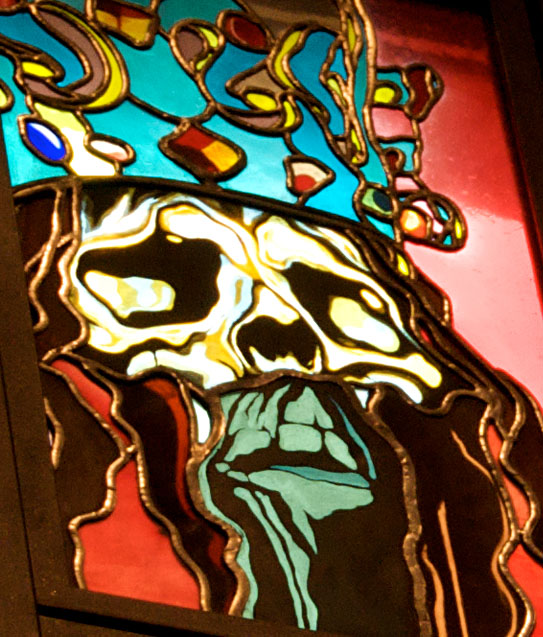
I have some more details of this window that I will post as I have time...
January 26, 2010
I am Zenon
The designs are interesting in their complexity, but the New-Agey lingo is way, way over-the-top.
That said, I like the form of the video. A stained glass designer talking about a given design. Simple. It would be interesting to imagine what other stained glass designers might sound like looking at their cartoons while explaining the design and iconographic choices.
January 03, 2010
Watching Eyes Hidden Cat
I spent some of the recent winter break helping my 11 year old daughter Gwyneth create this stained glass panel. She was the designer and I was merely the fabricator. Wonderful experience, and I love the result.
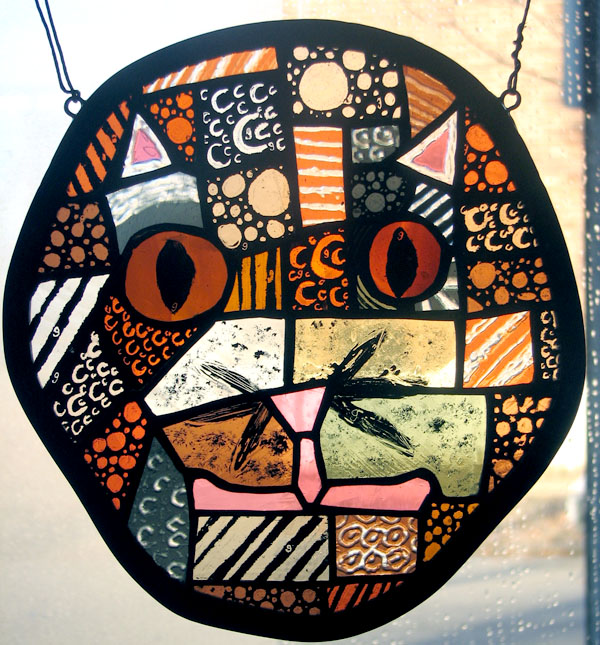
full story below the fold...
Original Sketch to Working Drawings
Original sketch by Gwyneth- 3¾" by 4"
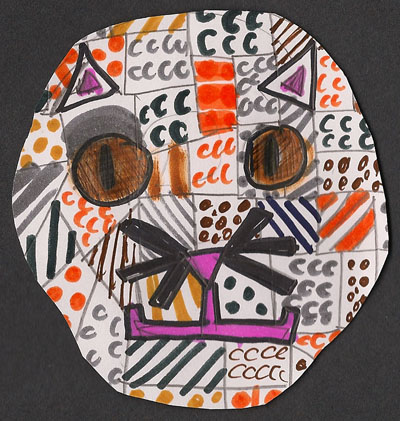
I scanned the sketch, enlarged the panel and added lead lines and pattern numbers.
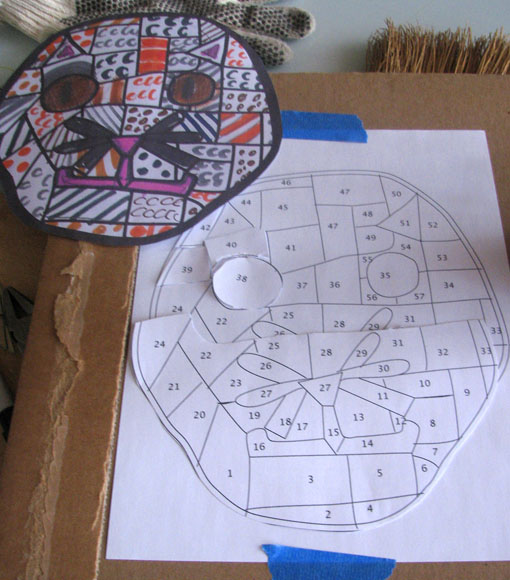
The various working drawings at the bench.
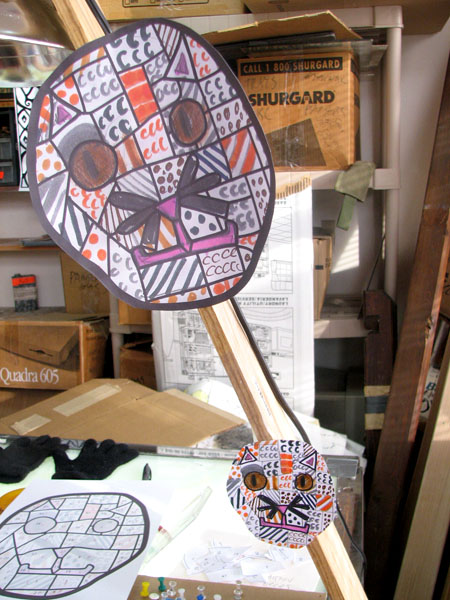
Glass Selection and Cutting
Gwyneth cut about a third of the pieces herself. As for the other two thirds, she chose the glass and laid them out for me to cut.
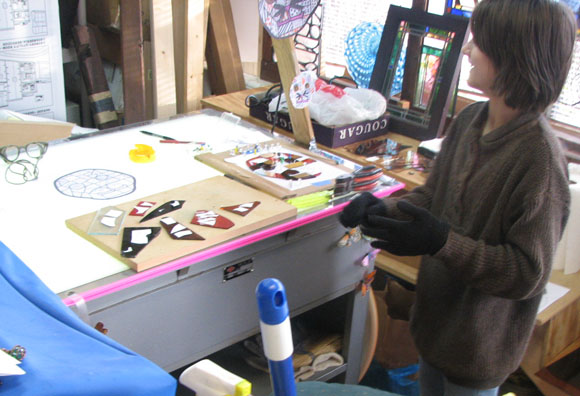
The panel was made up of all scrap handblown antique glasses, with about a third being flashed glass.
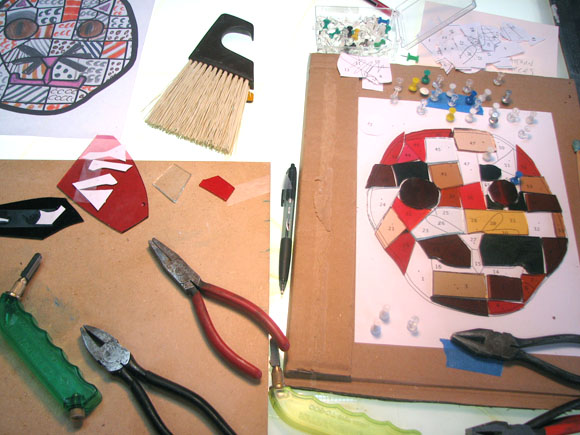
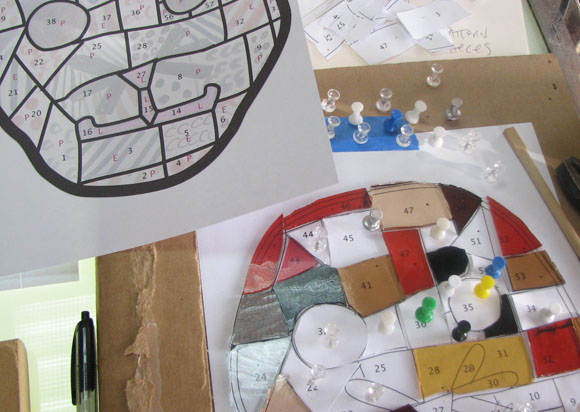
Glass Painting
Gwyneth did all the painting. Most of it is done in the 'scratch-out' technique, where the individual piece of glass is totally covered with paint, allowed to dry, and the design is scratched out with a needle or scribe. This shows her applying the paint and shows a few pieces covered in paint and drying.
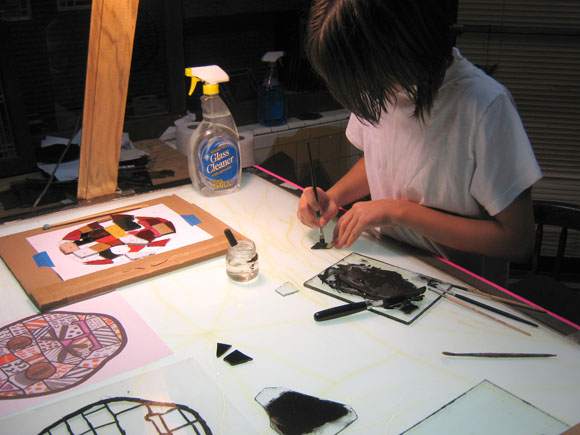
In this photo all but a few are already scratched out. The all-black pieces in the upper right are the last ones waiting to be scratched into.
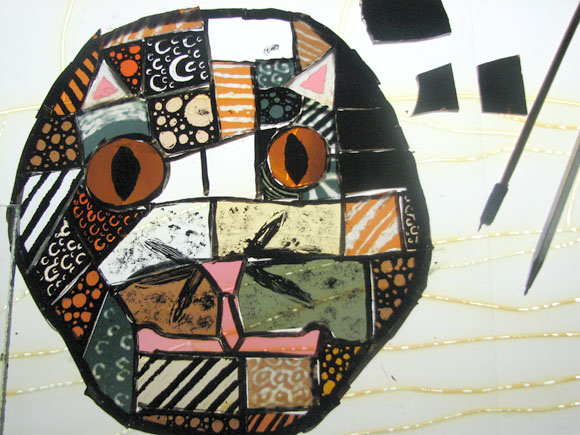
stained glass - it is a dirty business...
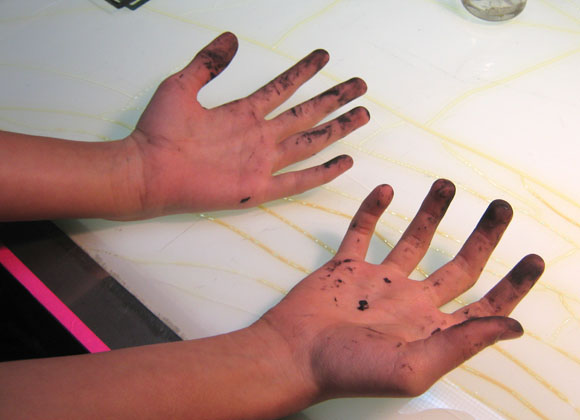
...and a dangerous one. Gwyneth's first stained glass related bandaid. A true right of passage. I feel so proud.
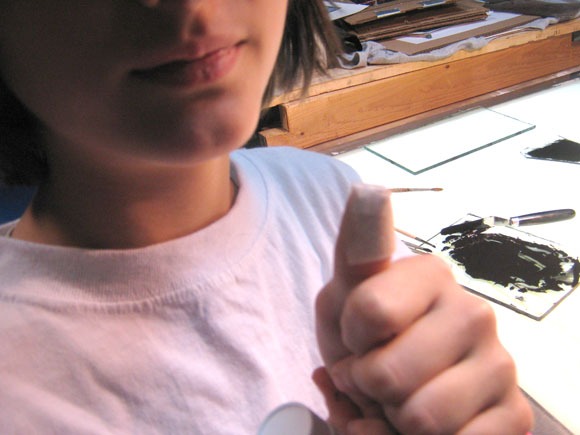
Glass Engraving
Of the 44 pieces in the panel, 29 are painted, 4 are left alone, and 11 are engraved. That is, they are flashed glass pieces engraved using a dremel tool with a diamond bit, and fire polished in the kiln.
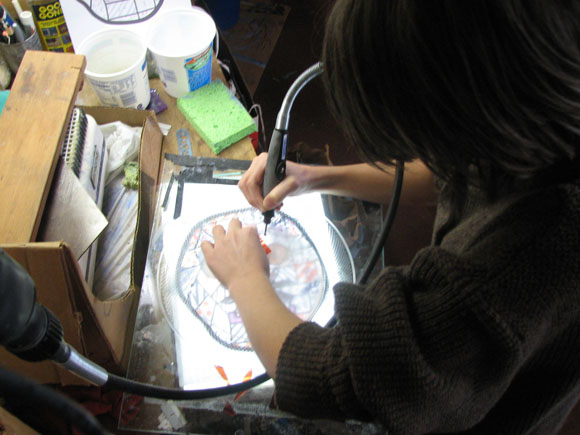
Copper Foiling
Gwyneth got her first try at copper foiling and foiled about 8 pieces. I did the rest.
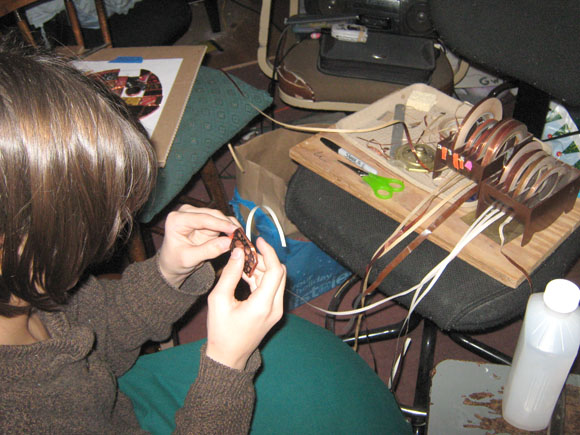
Assembly
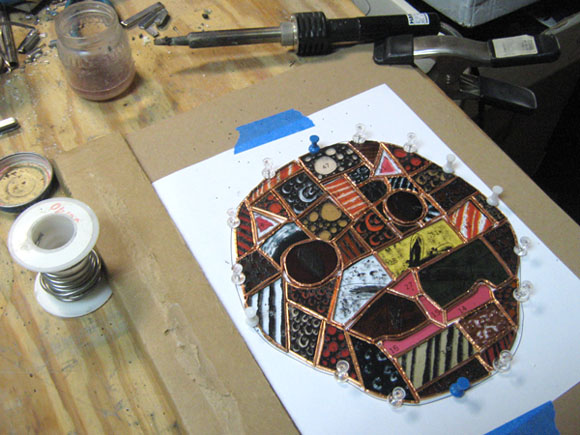
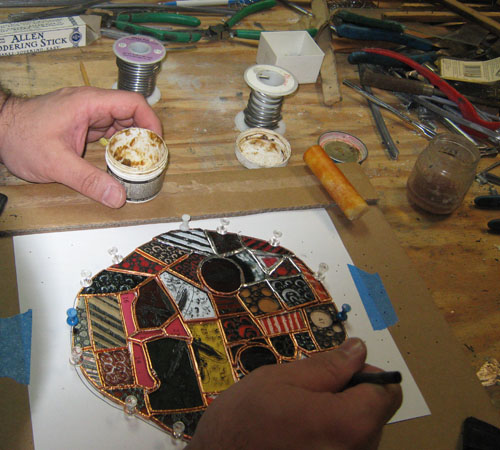
This is just after the patina was applied. I usually go for nearly a jet black on my own pieces, but in this case it seemed with the warm colors that a lighter copper patina was best.
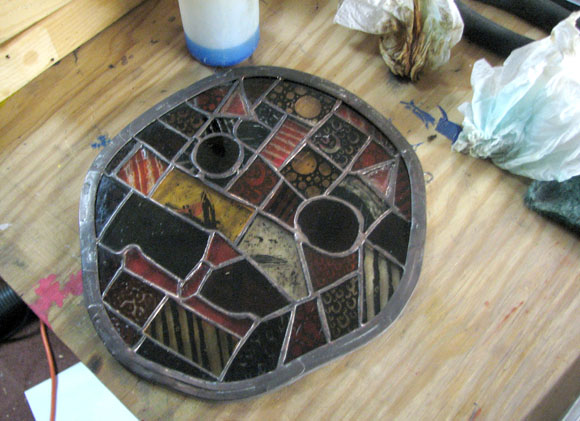
the final panel again

Signatures
Gwyneth made all the creative decisions. I made suggestions, but she had the final say on all things. Sometimes she made decisions I would not have done if it were my work, but there were a few times she did it her way and it came out much better than what I was thinking. An interesting example of this is found in the way she signed the panel. I suggested she sign it in a conventional way, by choosing a spot in the lower right corner and painting in her initials, 'GDK'. She didn't like that and decided to use a very fine needle and scratch in little g's throughout the panel. You can only see them in the close up shots.
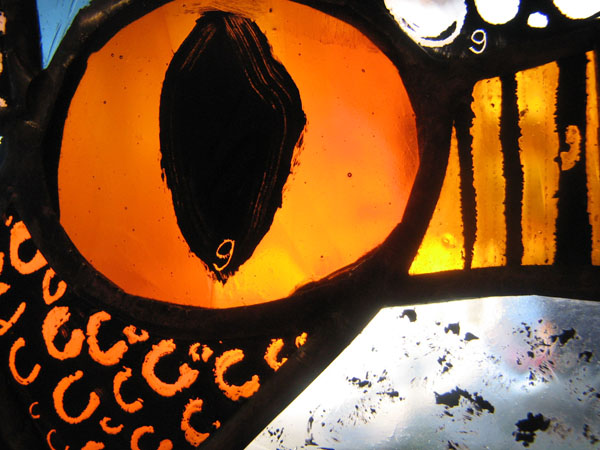
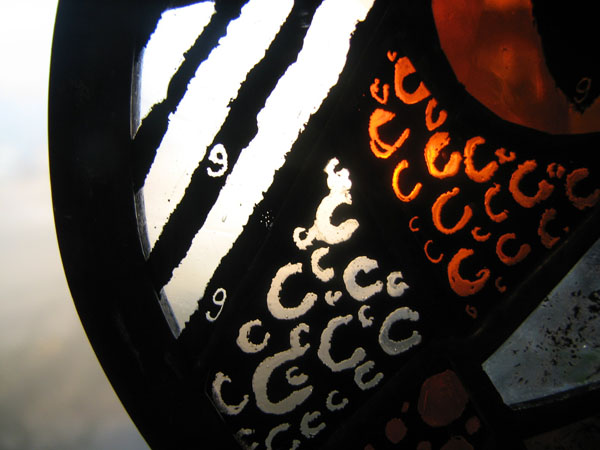
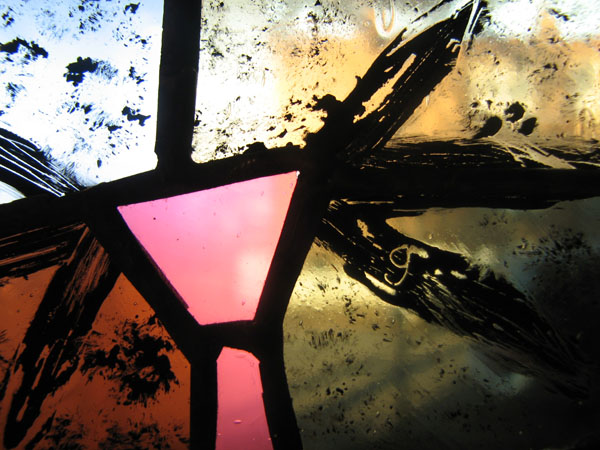
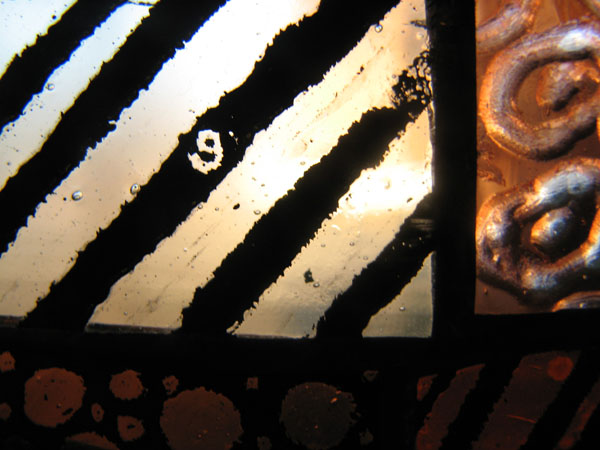
Gwyneth with the completed panel.
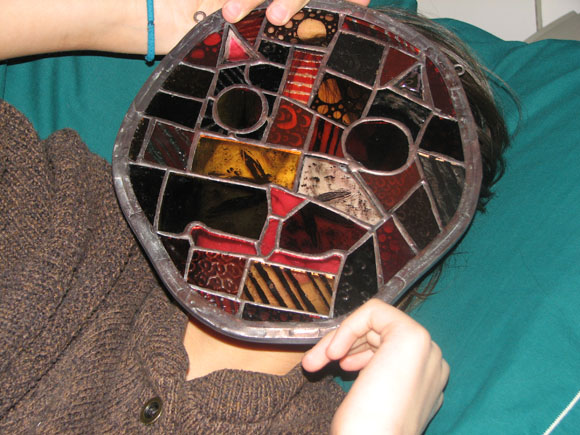
January 01, 2010
Happy Janus Day
that is, Happy New Year.
I often think at the beginning of a new year about the name 'January' and how it derives from the name of the Roman God Janus. I've long been fascinated by the image and the idea of Janus, the god who could look at the past and the future simultaneously. I've never seen a representation of Janus in stained glass, so I guess I have to make my own.
Janus Panel, black & white sketch from 2005, colored design in 2009, stained glass panel (sometime in the future?)
